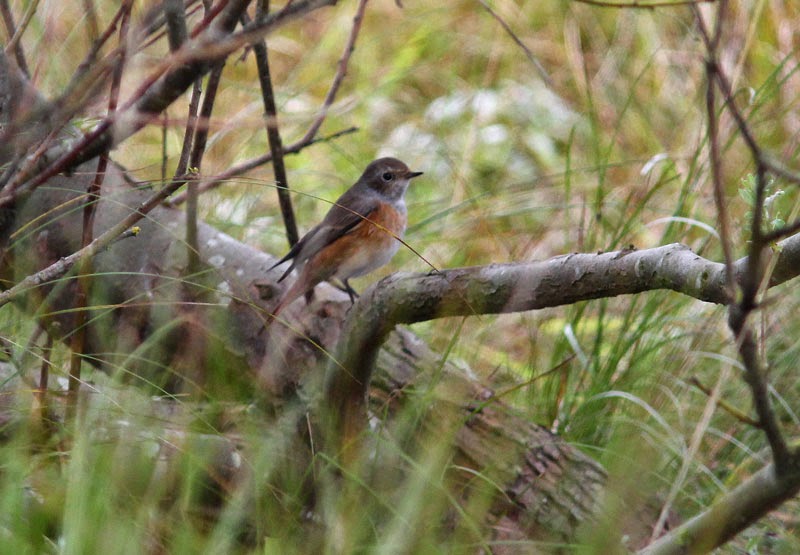I've been birding with
JWR now for over 25 years. He has his own way of doing things. One thing that anyone can notice is that he is very sharp when getting on to birds that have gone missing for a while, or picking something out miles away when others are standing navel gazing. One thing I've learned over the years is to be aware of where he is when he wanders off as is his want on most weekends, just in case he gets his eye in...
Today was such a day, but more of that later...
First thing and an overcast grey sky with a light easterly can only mean one thing - a trip to Holy Island for migrants. As the crossing didnt open until 10am, we checked a few wader sites on our way north, seeing nothing but a few 'padders' - Several
Ruff and
Greenshank,
Spotted Redshank and
Black tailed Godwit.
We crossed over to the island, flanked along a good stretch of the causeway by a male
Wheatear flying alongside the car. Masses of birds were on the flats with several hundred
Bar tailed Godwit, Golden Plover and Pale bellied Brent Geese.
We parked on the strand line just before the island proper and followed the track around the Chare Ends towards the Lonnens. All was quiet. We bumped into 'the butcher' coming out of the straight lonnen willows. He told us of a Red backed Shrike across at the lough and a scattering of common migrants that looked promising. In the willows were male and female
Redstart, Pied Flycatcher,
Willow Warbler and
Chiffchaff.
A
Stoat dashed around the track ahead of us.
We gradually made our way, anti-clockwise, around the lonnens towards the lough but we dipped miserably on the shrike. A
Whinchat was little compensation. Back along the wall, our first
Merlin of the autumn sat watching a family group of three
Kestrels together squabble around the fields.
Time was pressing on now and we started to wind down heading back to the car and off home.
Back at the Chare Ends, we split up, John followed the west side of the bund, and I took the east. Remember what I said earlier? I am now looking for migrants and, with a, not insignificant, sense of paranoia, keeping an ear out for John finding something just out of eyesight. A second
Whinchat was all I could muster on the route.
I now cut across the dune, back to his car and when I got there, there was no sign of its owner? Where is he now? I pondered and checked my phone for messages, then heard a faint whistle from somewhere out of sight. I blanked it. Then it came again, it wasn't a pipit, it sounded human. What is he doing I thought, then decided I better just go and see if it is John trying to attract my attention. I deftly leapt the barbed wire [?] narrowly avoiding being a shrike larder, and strolled up a high piece of dune.
There was John on the other side, crouched under a hawthorn, armed with his camera, pointing upwards. 'Psst,' I spat to get attention. He looked up and indicated on his upper arm, that what ever was in there had a wing bar! It could only be one of the striped phylloscs surely, so I stalked down to be told in hushed tone, 'Greenish'...
I was worried in case it flew out of the lone bush before I saw it, but some soft 'pishing' brought the
Greenish Warbler out to the front for a brief time before it flickered over to the next shrub. Superb! We watched it for no more than 15 minutes then put the word out to other birders on the island, then we had to make an exit for home...
Now maybe you can see that it is best to keep an eye on your mate if he is out of sight...
 |
| Greenish Warbler |













































